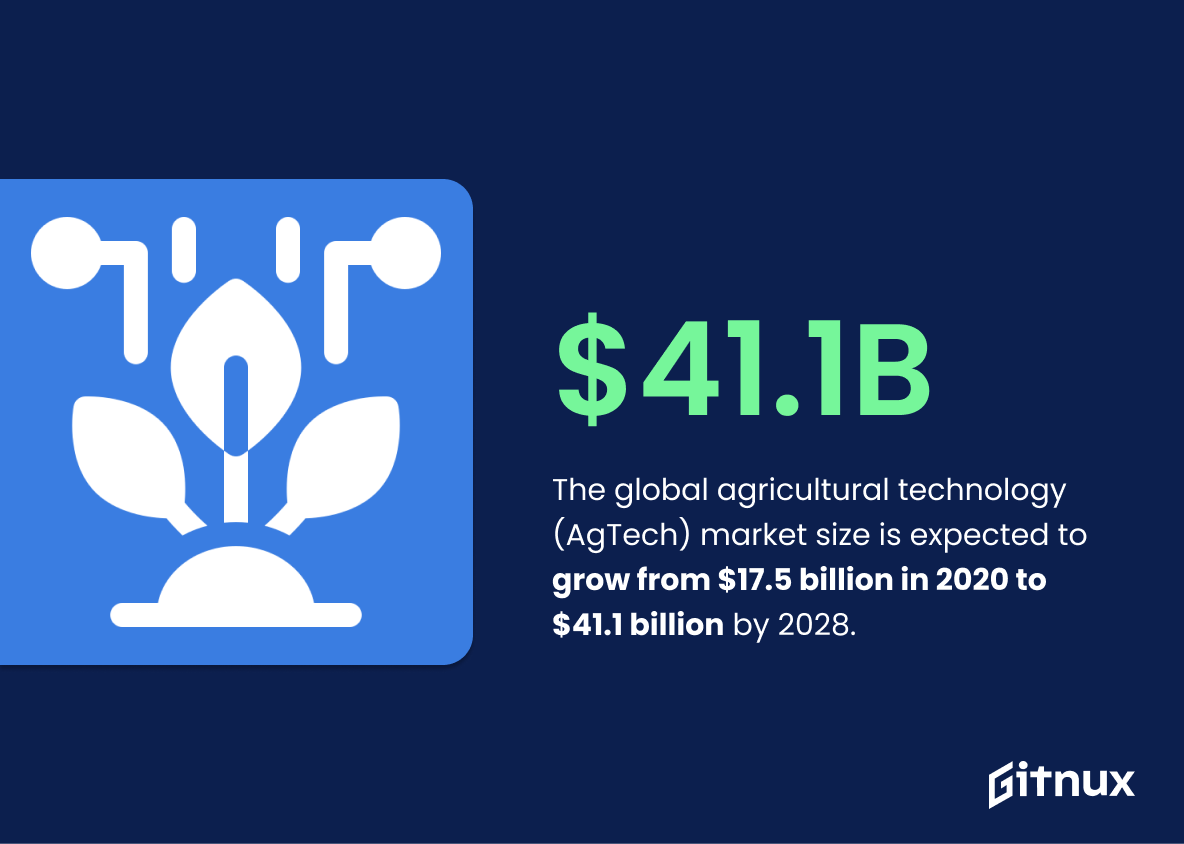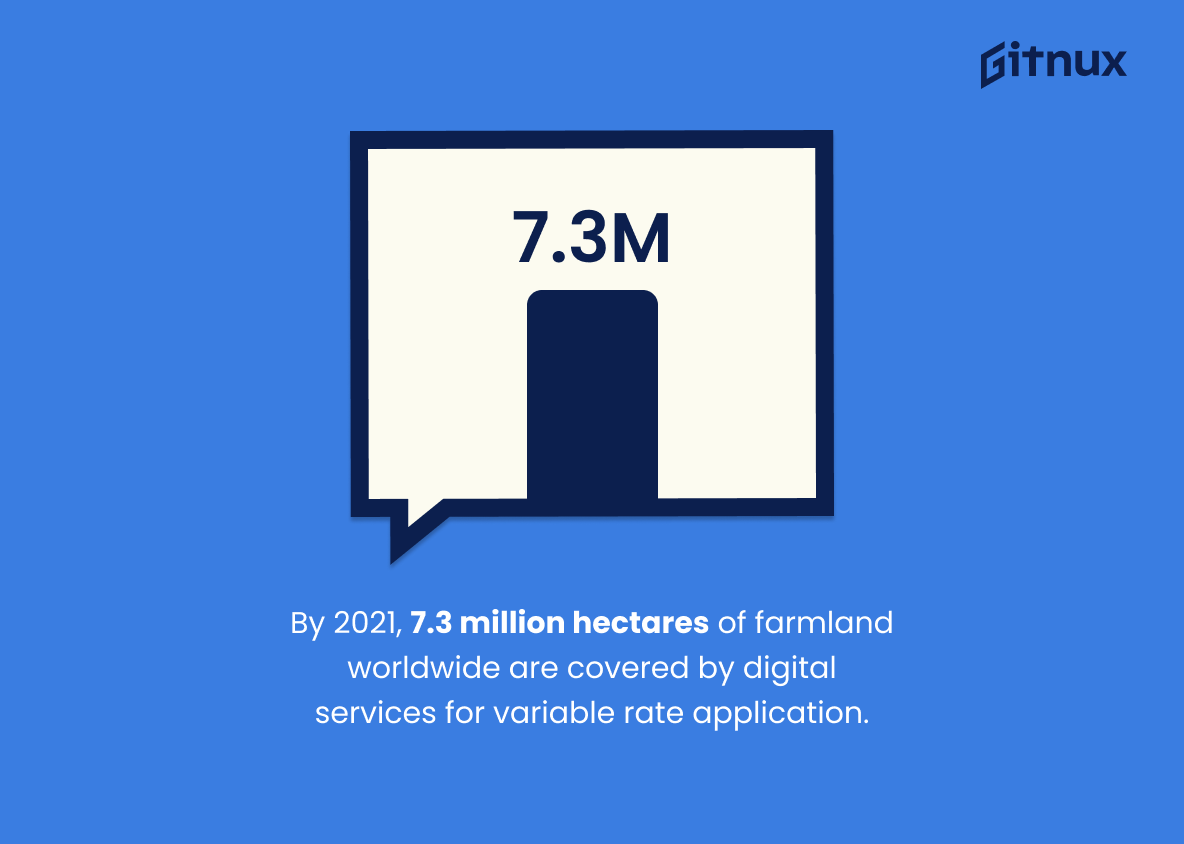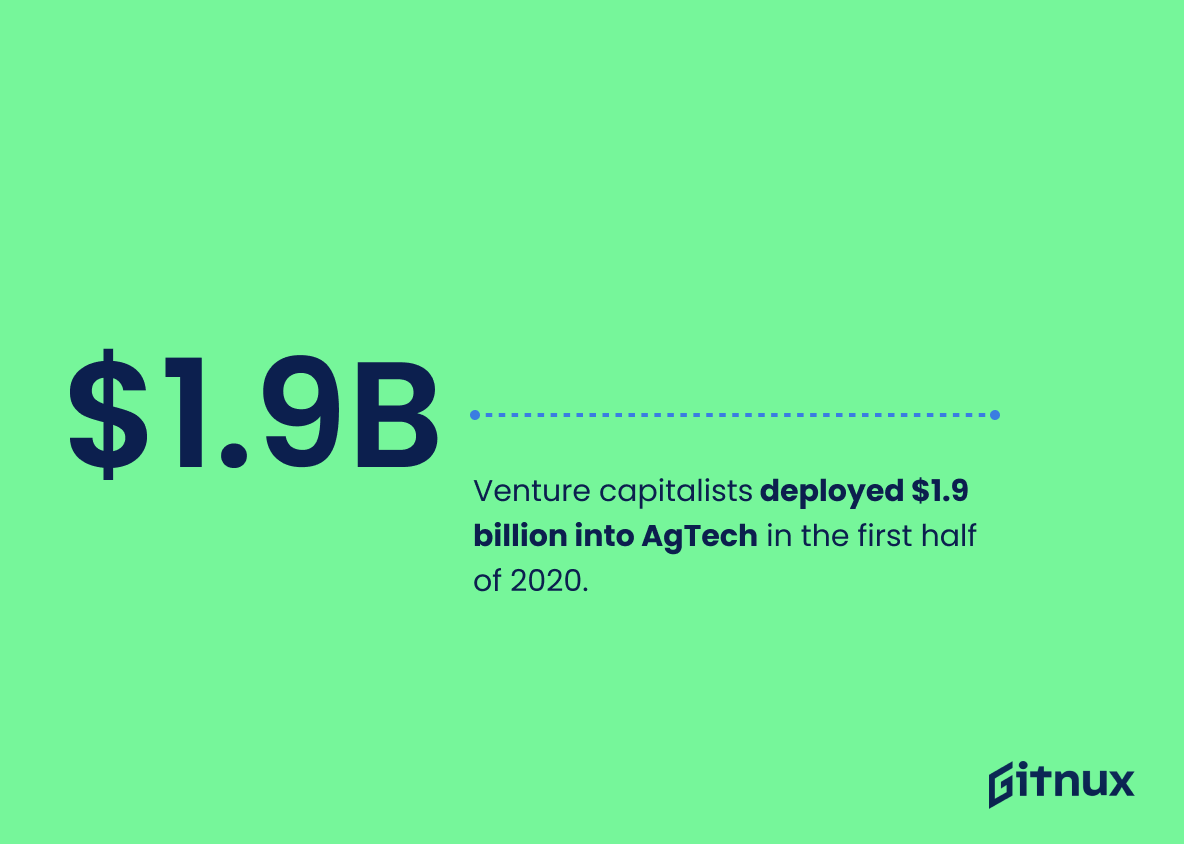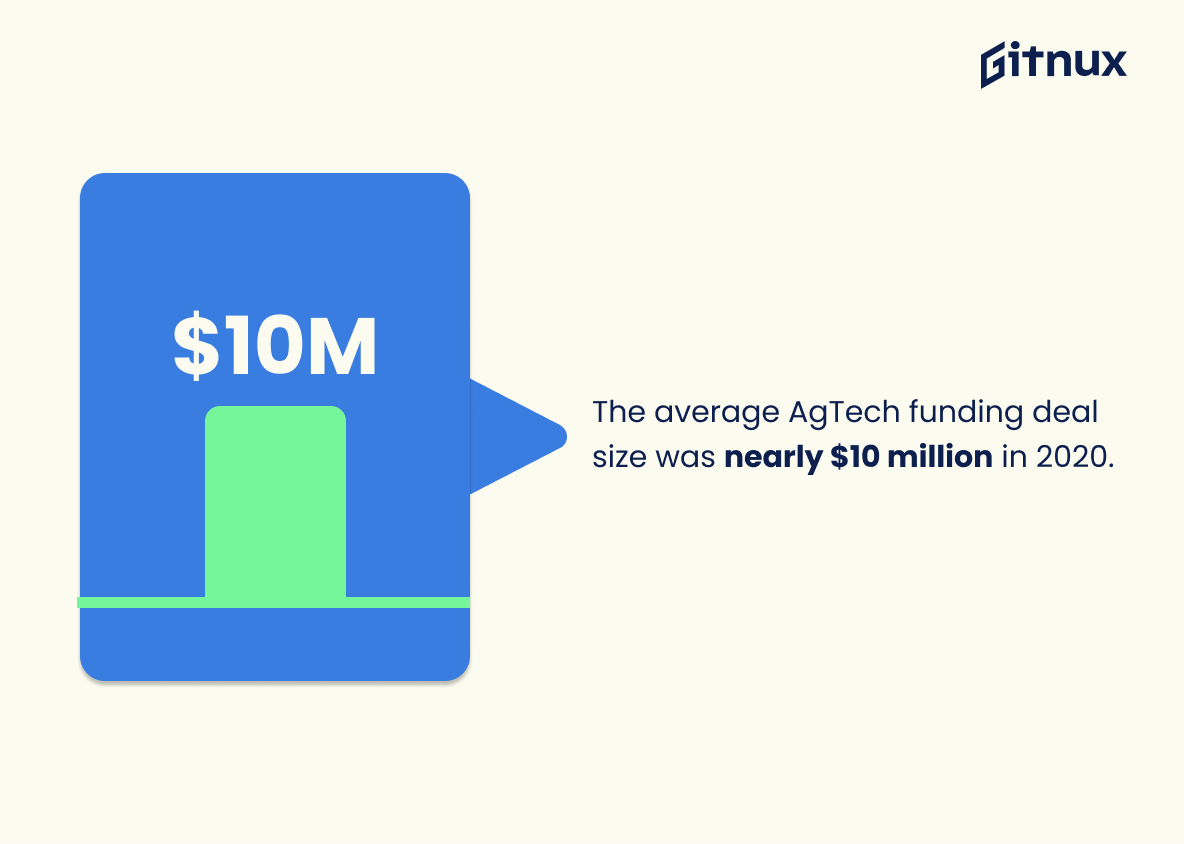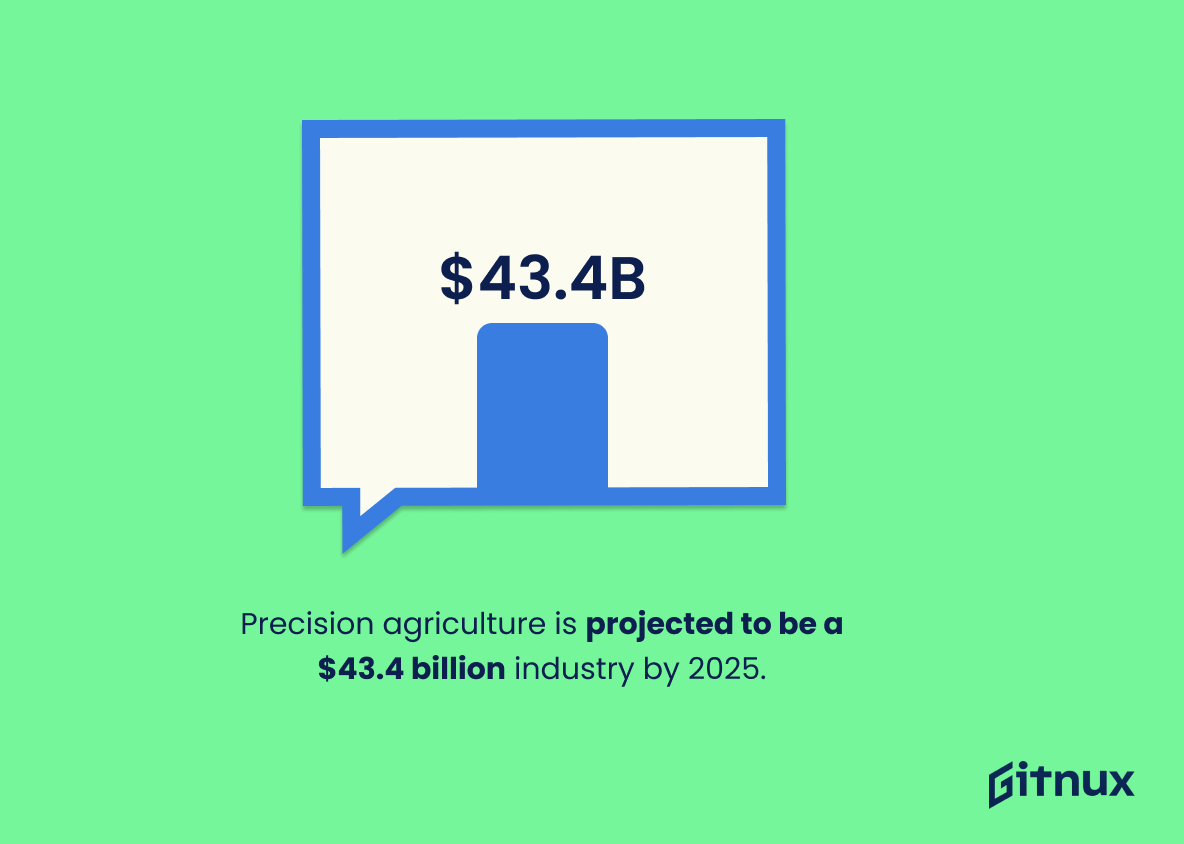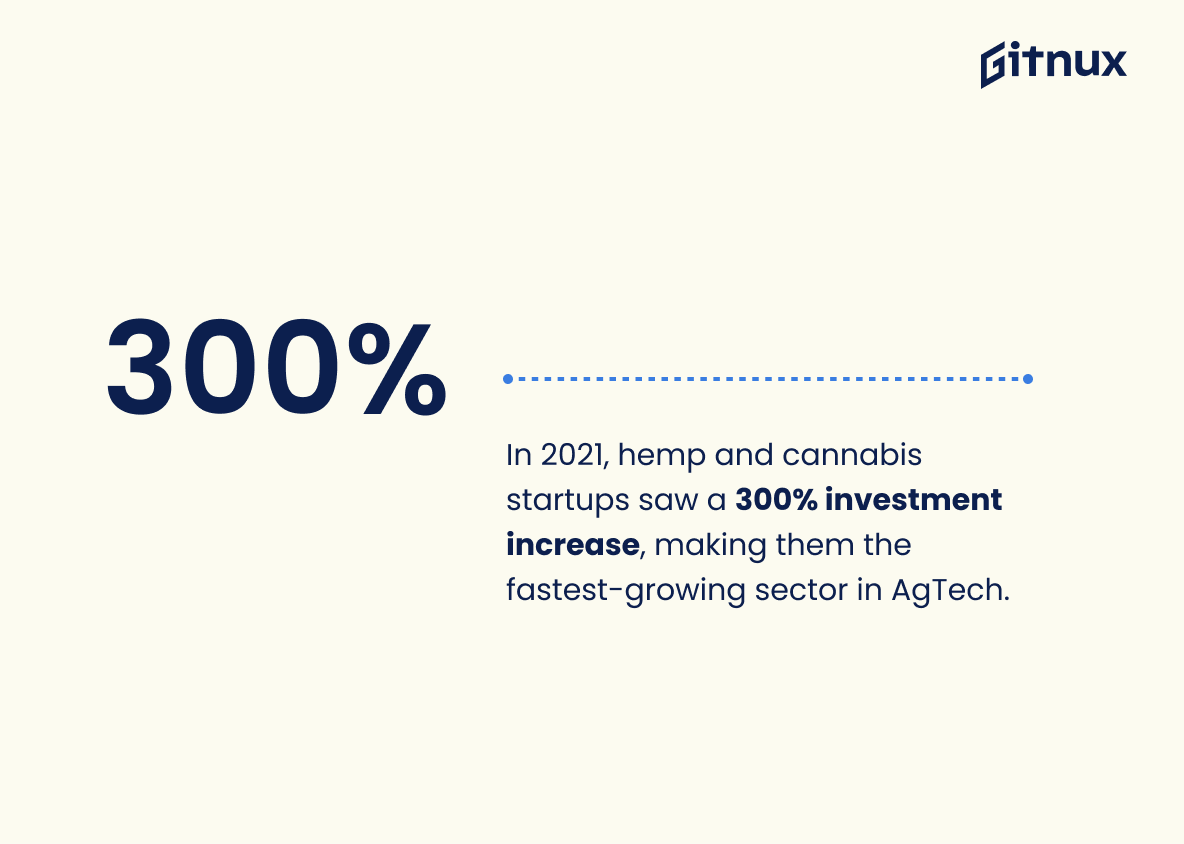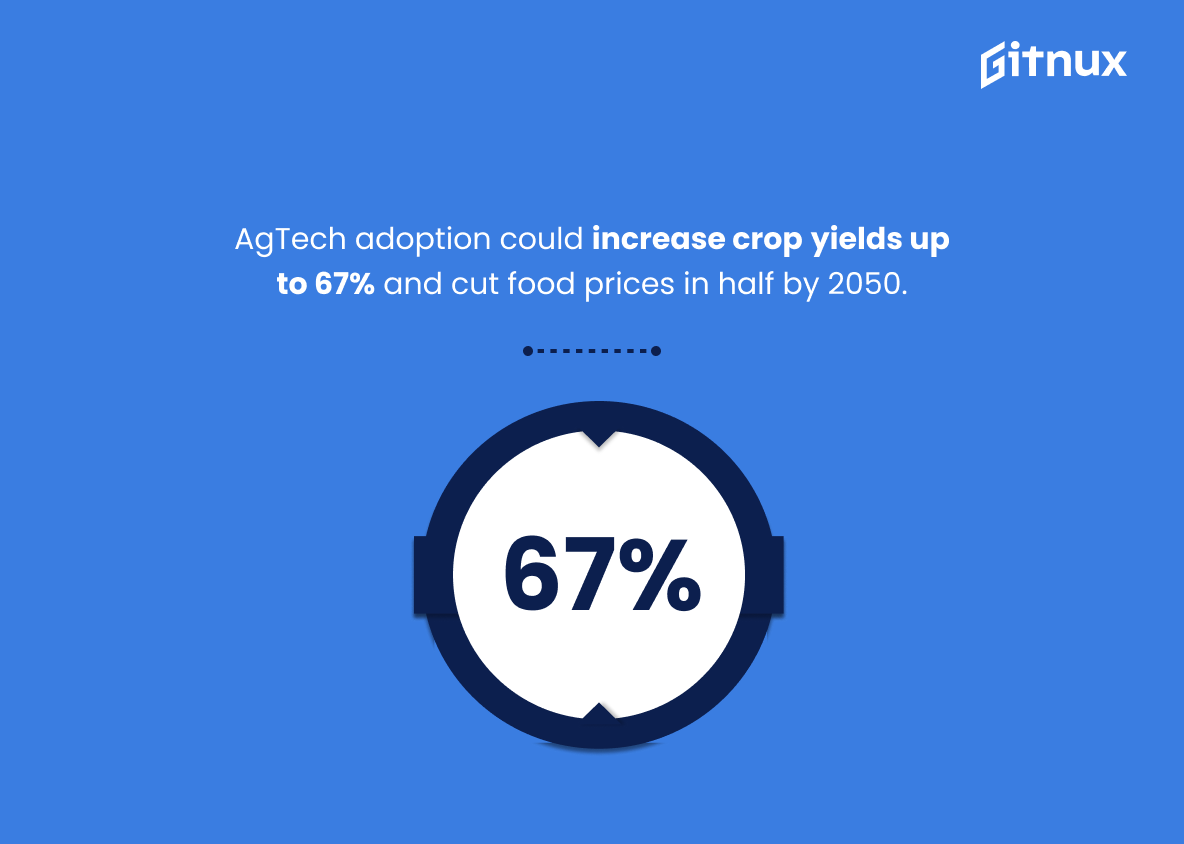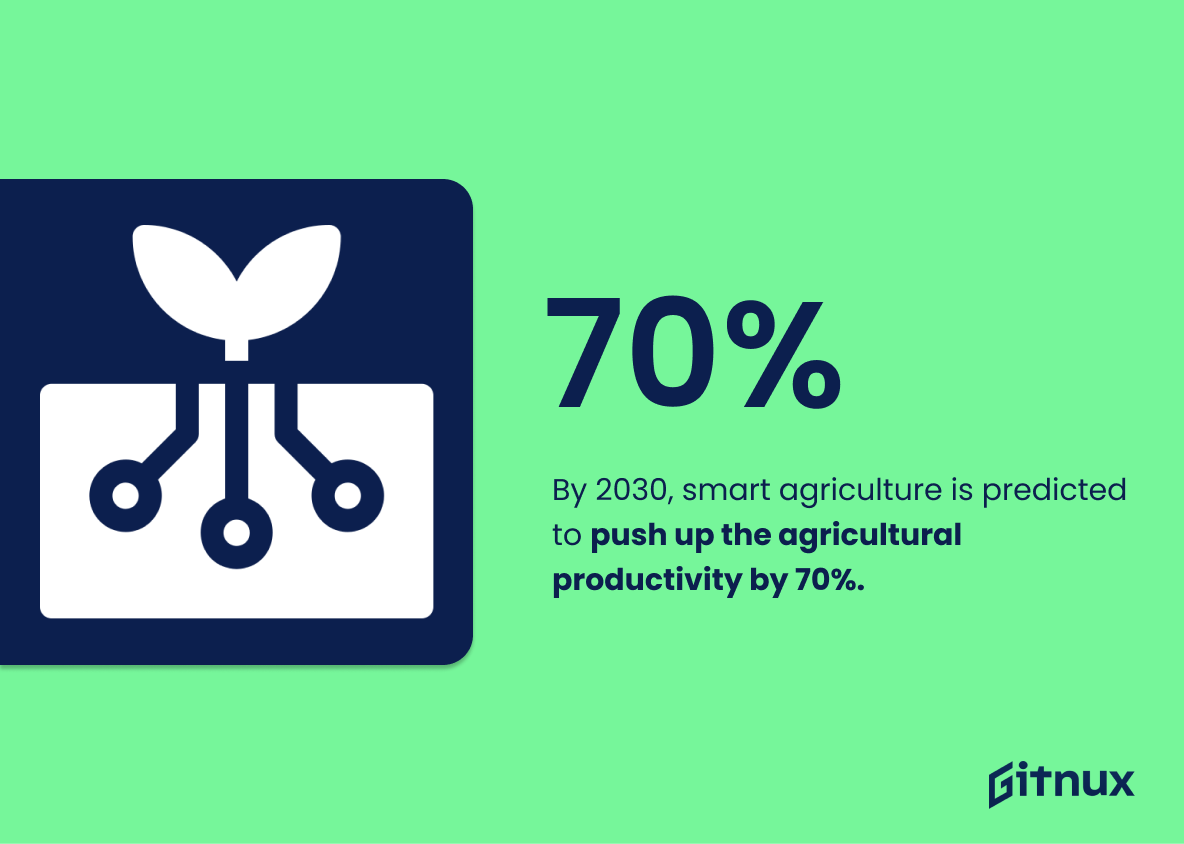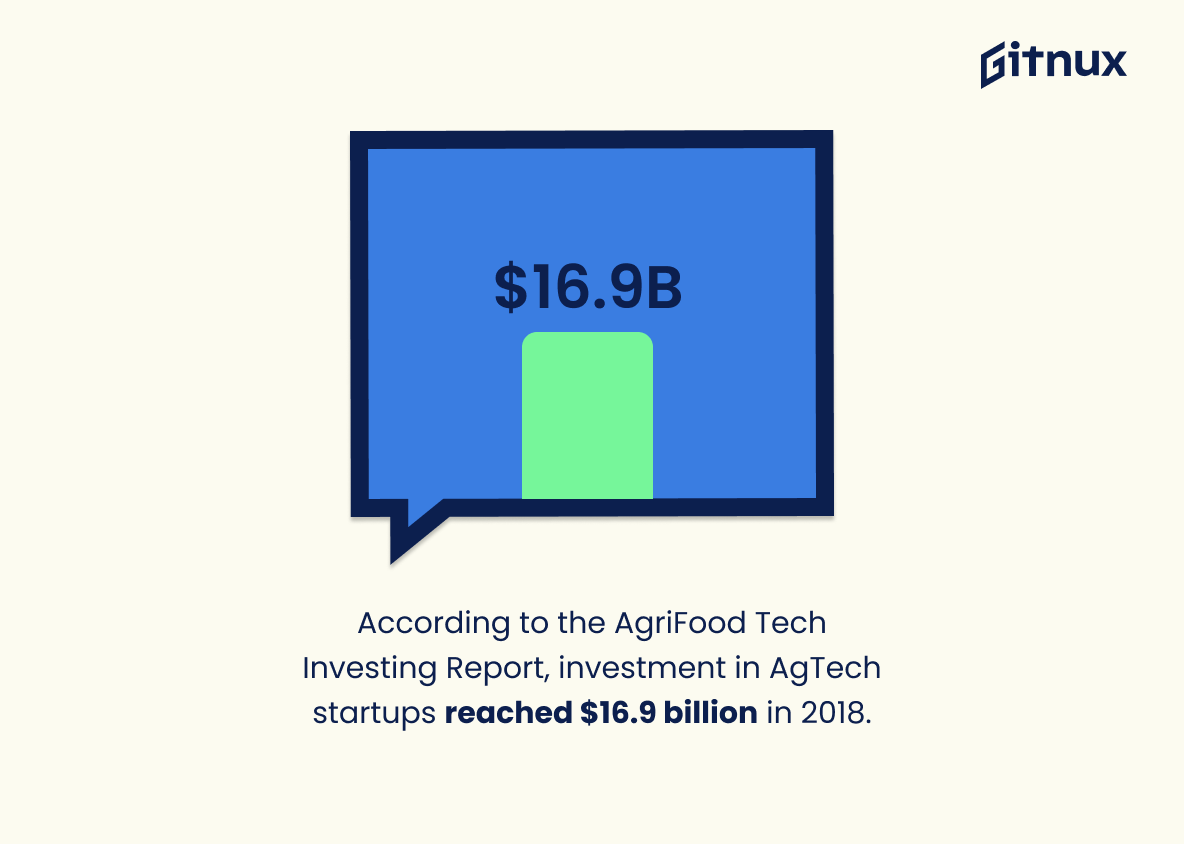Agriculture is among the oldest professions known to mankind, yet it’s an arena experiencing constant waves of technological advancements. Welcome to the rapidly evolving world of Agricultural Technology, or Agtech. This incredibly expansive industry is the meeting point of tradition and innovation, helping transform the agrarian world for optimal productivity and sustainability. Today, we dive into the heart of this transformation, examining the most current and critical Agtech Industry Statistics. How exactly is technology shaking up the global agriculture scene? Continue reading to unveil the powerhouse role Agtech plays in modern-day farming and future food security scenarios.
The Latest Agtech Industry Statistics Unveiled
The global agricultural technology (AgTech) market size is expected to grow from $17.5 billion in 2020 to $41.1 billion by 2028.
Highlighting a sharp trajectory from $17.5 billion in 2020 to an anticipated $41.1 billion by 2028 underscores the tremendous propulsion in the AgTech sector. It paints an astoundingly clear image of a booming industry ripe with opportunities for investment and innovation. In the face of global challenges, the agricultural sector is embracing technological solutions at an exponential pace, as mirrored by these figures. The prospective growth forecasts a transformative shift in traditional farming methods, underscoring not only the economic impact but also the magnitude of the role AgTech is poised to play in responding to global food security issues. This statistic is an eloquent testimony to the potential that hides within the combination of agriculture and technology, setting the stage for the story of the AgTech industry that the blog post will unfold.
By 2021, 7.3 million hectares of farmland worldwide are covered by digital services for variable rate application.
Highlighting the statistic “By 2021, 7.3 million hectares of farmland worldwide are covered by digital services for variable rate application” underscores the significant strides and transformative power of the Agtech industry. This substantial digital coverage, enveloping millions of hectares of global farmland, mirrors the accelerating acceptance and dependence on technological innovations within agriculture.
The multifaceted emergence of digital services, particularly for variable rate application, symbolizes a profound paradigm shift towards precision agriculture. Employing digital technologies empowers farmers to practice bespoke cultivation techniques, optimizing resource use, boosting crop yields, and minimizing environmental impacts. The sheer volume of hectares under digital supervision paints a picture of a farming future shaped, not by the whims of weather and chance, but by the precise and informed applications bestowed by digital technology.
In the wider narrative, the ubiquity of such technology across 7.3 million hectares vividly underlines the massive economic and social potential carried by Agtech. It also provides valuable foresight for stakeholders, hinting at the massive opportunities for growth, innovation, and investments in this domain. Unraveling this statistic shows a world where traditional farming is not just being replaced with technology, but evolving with it, creating a harmonious blend of tradition and technology, all in the relentless pursuit of global food security and sustainability.
Venture capitalists deployed $1.9 billion into AgTech in the first half of 2020.
The continuous infiltration of venture capitalists into the AgTech arena with an astounding $1.9 billion in the first half of 2020 alone paints a vivid picture of an industry on the verge of exponential growth. This immense financial injection is instrumental to drive innovation, accelerate research and development, and enhance the potential market reach of these AgTech enterprises. As such, it underscores the burgeoning confidence of investors in the industry’s prosperity and future technology transformations that could redefine the agricultural landscape. It also ignites a beacon for budding entrepreneurs and startups, signifying the AgTech industry as a dynamic, immensely rewarding, and viable field of investment.
The average AgTech funding deal size was nearly $10 million in 2020.
Exploring the significance of this figure, it’s akin to providing a powerful beacon of light on the state of the AgTech industry. It showcases that investors are willing to pool significant capital into AgTech firms, crystallizing the trust and belief in the potential growth and expansion of this sector. This invigorating shot of almost $10 million per deal serves as compelling evidence of the burgeoning interest and financial commitments pouring into transformative AgTech solutions in 2020. Therefore, this statistic is an impactful testament to the vibrant economic health of the AgTech industry, acting as a decisive motivation for more stakeholders to journey into this flourishing field.
In 2020, more than 350 funding rounds were made worldwide in the Agtech sector.
Illuminating the global financial landscape, we witness an important trend in 2020, where over 350 funding rounds were globally actioned in the Agtech sector. This pulse of economic activity underscores an exceptional level of investor confidence propelling the market forward. This surge in financial support is key to understanding the exponential growth and expanding influence the Agtech sector commands today. It paints a portrait of an industry ripe with innovation and potential, further revealing its irreplaceable role in driving sustainable agricultural practices for tomorrow. Therein lies the power of this data point; it’s not just a number, but a beacon hinting at the dynamic trends and patterns shaping the future of agriculture.
As of end of 2020, the United States has the highest market share in the agriculture technologies (Agtech), with a market share of 58%.
Mirroring the rapid evolution of Silicon Valley, America’s dominance in the Agtech industry, commanding an impressive 58% market share as of the close of 2020, provides compelling food for thought. In the fertile field of Agtech Industry Statistics, this peculiarity acts as a high-powered magnifying lens, offering depth and dimension to the larger narrative of technological growth in farming.
Think of this statistic as the DNA of the Agtech industry, a complex code revealing the story of innovation, competition, and global stakes. It’s a testament to America’s entrepreneurial spirit, painting a striking portrait of how the nation’s tech industry has successfully branched into agriculture.
In the grand chessboard of Agtech, this number is a kingmaker, underscoring U.S’s assertive position in driving the industry narrative and setting the pace for the rest of the world. Brace yourselves, readers, for an avant-garde tour into the fascinating kernel of Agtech growth, framed by this decisive statistic. It signifies not just market leadership, but the promise of innovation seeded today for a bountiful harvest tomorrow.
Precision agriculture is projected to be a $43.4 billion industry by 2025.
Envision the agtech landscape, a rapidly evolving frontier where technology marries agriculture, propelling us headlong into a future of sustainable farming clouded only by abundant yields. Now picture within this, the entrancing artistry of precision agriculture, poised to leap to the astounding figure of $43.4 billion by 2025. Without question, this statistic serves as a beacon of prosperity, a promise of the golden dawn set to break over agriculture. The sheer scale of such growth anticipates the far-reaching impacts precision farming tools and techniques will have, not only on enhancing agricultural productivity, but in fundamentally sculpting tomorrow’s second ‘green revolution’. Hands down, this towering advancement in monetary terms underscores the vital importance of precision agriculture and its pivotal role in shaping the future of the agtech industry.
In 2021 hemp and cannabis startups were the fastest growing sector in AgTech, with investments up by 300% compared to 2020.
Undeniably, the 300% increase in investments in hemp and cannabis startups underscores a significant shift within the AgTech industry in 2021. This surge hinges on the unearthing of a new gold mine, an indicator of both the maturation and diversification of the AgTech sector. It offers a promising vista, serving to accentuate the fact that investors are seeing the potential of these oft-underestimated crops, thereby leading to an influx of capital. This escalating trend alters previous trajectories and paints a budding picture of the future—wherein hemp and cannabis stand tall as significant players in the arena of agricultural technology. Positioned as the vanguard of this year’s fastest-growing sector, these startups may very well steer the course of the AgTech industry moving forward.
Robotics is the third biggest AgTech sector, having raised $400 million in 2020.
Highlighting the impressive $400 million funding for Robotics in 2020, in the realm of AgTech, underlines the growing intersection of technology and agriculture. It emphasizes how key stakeholders are significantly investing in robotics to unlock new potentials in the agricultural sector. Moreover, it underscores the arrival of the new wave of innovation in farming – robotics, positioning itself as the third largest AgTech sector. The figure serves as a beacon of progression, signifying a futuristic shift in agricultural operations towards more automated and precise technologies. Such a statistic weaves a vivid story of transformation and adaptation in agriculture, building a captivating narrative for readers delving into AgTech Industry Statistics.
AgTech adoption could increase crop yields up to 67% and cut food prices in half by 2050.
This remarkable statistic serves as a vibrant roadmap that projects us into the thrilling future of the AgTech industry. It’s almost like standing at the precipice of an agricultural revolution, with technology reported to boost crop yields by an astounding 67%, a promise that could significantly transform the looming global food crisis.
Moreover, the prism of this statistic sheds light on the potential for a dramatic reduction in food prices, peaking at half their current levels by the year 2050 – a hopeful statistic for millions struggling with food security. And there’s more. This statistic isn’t just a number. It is huge leap forward for sustainability, enabling us to feed the planet without plundering it.
As you explore the landscape of the AgTech industry through this blog post, this statistic underpins the importance of technology in reshaping agricultural practices, indicating a shift that’s not merely necessary, but lucrative too. This underlines the opportunity for investors and innovators to tap into a business sector that promises not just profits, but also a chance to play a part in fighting world hunger. The AgTech industry, as presented through this statistic, is truly fruitful in the depths bound within it.
By 2030, smart agriculture is predicted to push up the agricultural productivity by 70%.
Forecasting a 70% surge in agricultural productivity by 2030 due to smart agriculture underscores the revolutionary role technology is set to play in the agricultural realm. It throws light on the tremendously promising potential of Agtech, symbolizing a paradigm shift as we advance towards more sustainable and efficient farming techniques. This statistic, embedded in the heart of a blog post about Agtech Industry Statistics, offers an enlightening glimpse into the future, highlighting the inextricably intertwined paths of agriculture and technology, and their collective potential to disrupt conventional farming practices. It practically superimposes a growth map for innovators, farmers, investors, and policymakers, cultivating a fertile ground for discussions around leveraging technology for food security and environmental sustainability.
According to the AgriFood Tech Investing Report, investment in AgTech startups reached $16.9 billion in 2018.
The investment in AgTech startups reaching a remarkable $16.9 billion in 2018, as revealed in the AgriFood Tech Investing Report, throws a spotlight on a shifting landscape within the Agtech industry. This not only underscores the surging financial confidence in these startups, but it also acts like a pulse check on the industry’s innovative capabilities. It symbolizes the advent of technologies to revolutionize, boost, and streamline agricultural practices, thus marking a pivotal milestone in the track record of the AgTech industry. This figure acts as both a funding compass and an innovation yardstick for startups within the sector, hinting towards an exciting future ripe with opportunities.
The Asia-Pacific region is expected to be the fastest-growing for AgTech with a CAGR of 20.4% from 2020 to 2027.
Foretelling the future of the AgTech industry, this compelling statistic strongly suggests the Asia-Pacific region as the next big horizon for exponential growth. It showcases that this area could become a whirlwind of innovation and development in AgTech, boasting a predicted CAGR of 20.4% from 2020 to 2027. This revelation captures the attention of investors, startups, and government bodies. It paints a vivid image of economic opportunities ripe for the taking, making this statistic an essential ingredient in the recipe for understanding the potential prosperity within the AgTech industry.
AgTech companies in crop farming sector received the highest level of funding, with $3.6 billion invested across 230 deals in 2020.
Unfolding the veil on the importance of this intriguing statistic, let’s journey into the heart of the AgTech industry. The crop farming sector, holding the torch with a remarkable $3.6 billion investment in 2020, leads the way in garnering the attention, trust, and financial backing of investors. This financial influx spanning across 230 deals not only reflects the sector’s robust health but also the escalating faith in its modern technological applications. It is a testament to how paramount AgTech’s role has become in shaping the future of global food security and sustainability. This revelation will undoubtedly fertile soil for far-reaching discussions on the opportunities, challenges, and future directions within the vibrant landscape of the AgTech industry.
Mariculture technology is the slowest growing section of the AgTech industry, with investments down by 27% in 2021 compared to 2020.
The above-mentioned statistic casts an intriguing light on the evolving dynamics within the AgTech industry. The 27% dip in investments in Mariculture technology in 2021 highlights a critical shift in the investor confidence or focus, outlining potential opportunity areas that could be underexplored or problems that need innovative solutions. Juxtaposing this trend against other sectors of AgTech could offer valuable insights into the industry’s trajectory and where the next big breakthrough might be hiding. Hence, when crafting a narrative of the AgTech industry through statistics, this particular figure sparks attention, stirring conversations about the future of Mariculture and possibly directing towards a need for a more sustainable, investment-attracting innovation.
Conclusion
In conclusion, the Agtech industry is gaining significant traction as technology continually intersects with agriculture. The impressive growth is backed by startling statistics that reveal the increasing number of investments, escalating market value, and expanding range of innovations. As we have seen, Agtech is not just a buzzword but a transformative force providing efficient, sustainable, and profitable solutions for the agricultural sector. With these statistics, it is clear that technology integration in agriculture is not slowing down. Ultimately, as the Agtech industry continues to evolve, so will its opportunities and impacts on global agricultural productivity and sustainability. It’s indeed an exciting future to anticipate.
References
0. – https://www.www.statista.com
1. – https://www.www.grandviewresearch.com
2. – https://www.www.agfundernews.com
3. – https://www.www.fortunebusinessinsights.com
4. – https://www.www.marketsandmarkets.com
5. – https://www.www.prnewswire.com
6. – https://www.financesonline.com
7. – https://www.marcomcentral.app.pti.com
8. – https://www.venturebeat.com
9. – https://www.www.capgemini.com
10. – https://www.techcrunch.com
11. – https://www.www.funderbeam.com
12. – https://www.agfundernews.com
